Rowanberries or Mountain ash berries are an edible berry from a tree most people don't think of as food. If you're Scandinavian like me, cooking with these deliciously bitter fruit is in your blood. Oh, and you can use them to cast magic spells, or so the legends go.
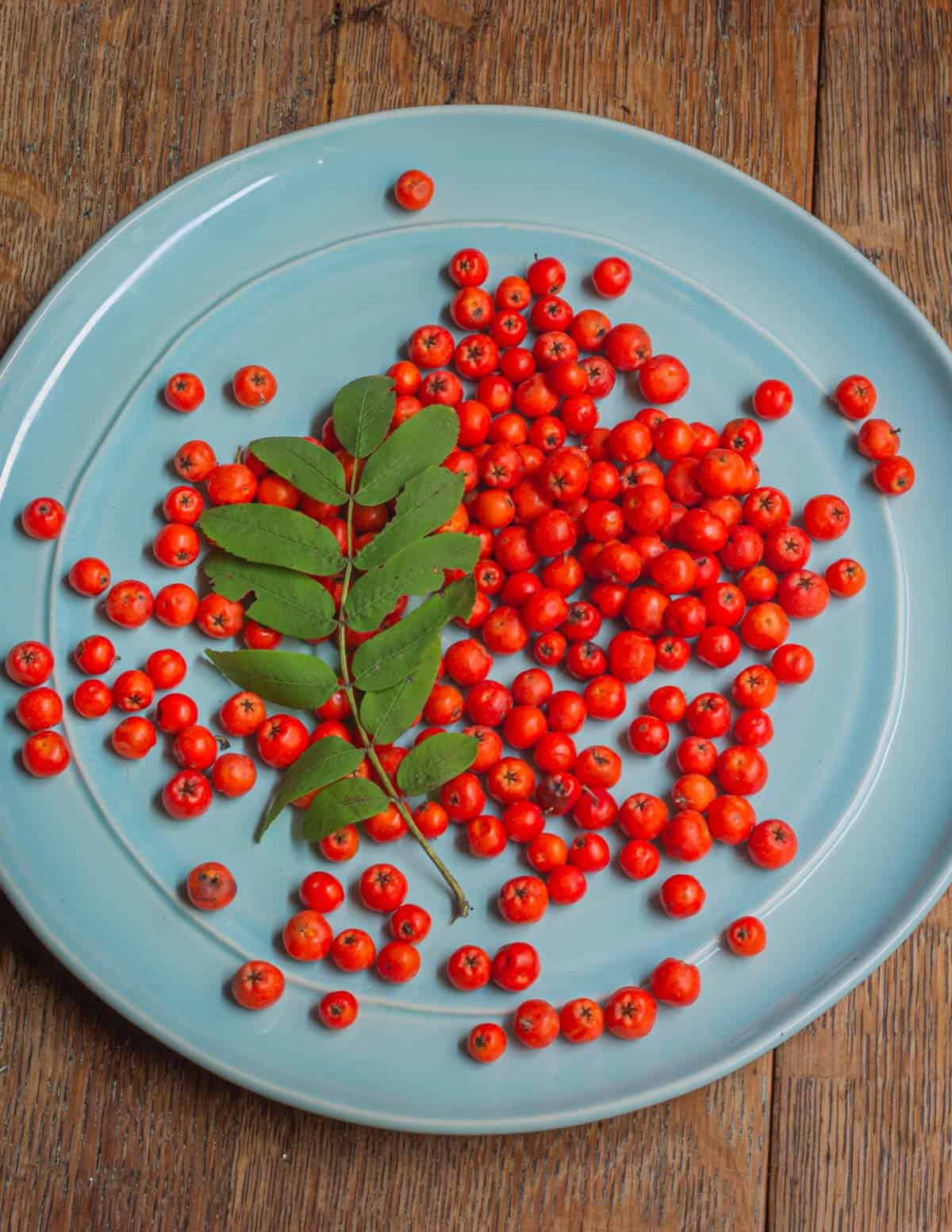
What are Rowanberries?
Rowan berries are the fruit of a number of different trees in the Genus Sorbus. The fruit appear as clusters of red or bright orange berries in the late summer and fall. They're related to apples and roses, and distantly, to Aronia.
The best variety I've cooked with is Sorbus americana, but there's others like Sorbus aucuparia that are often sold as ornamental trees for landscaping. It can be difficult to separate between species as the trees will hybridize and cross-pollinate.
Fruit
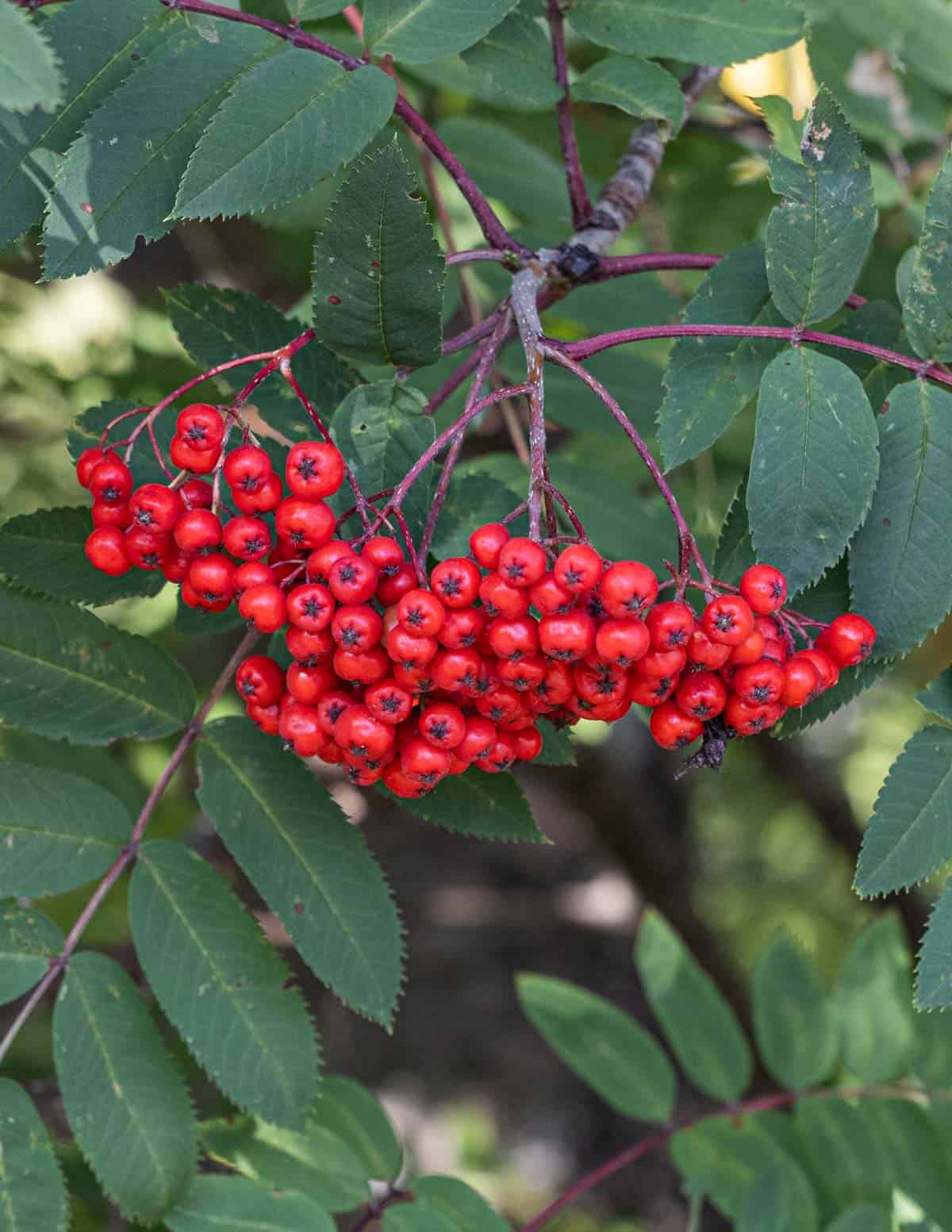
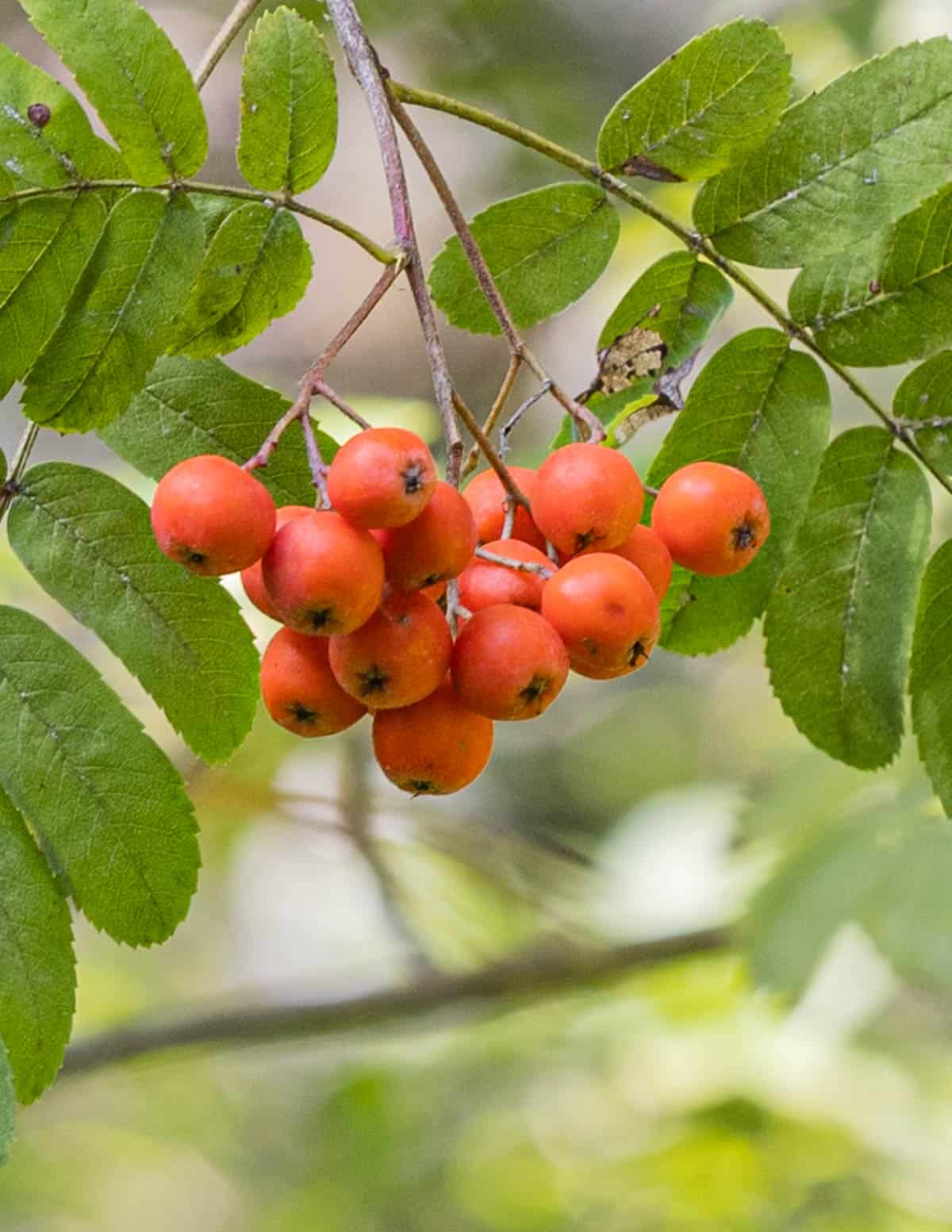
Leaves and Bark

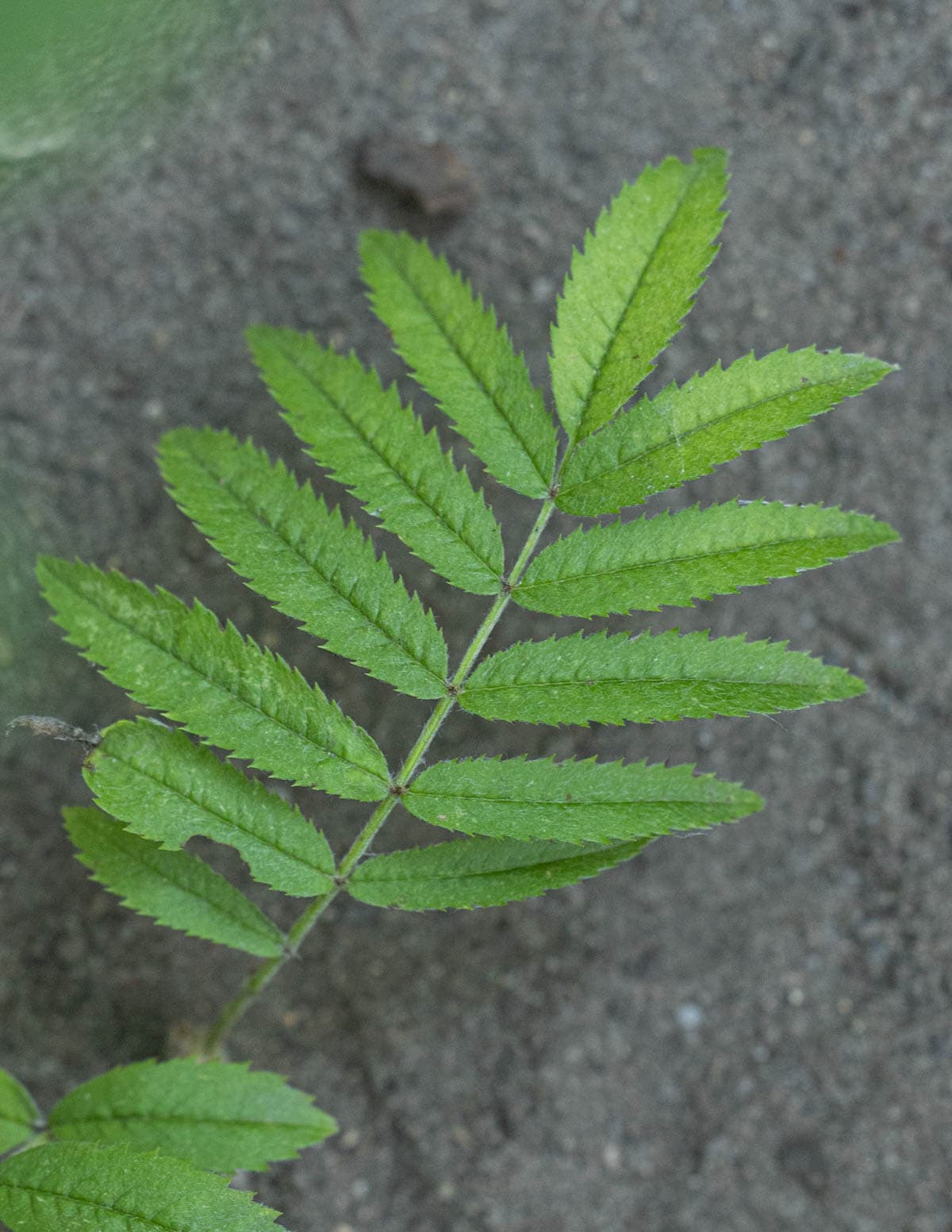
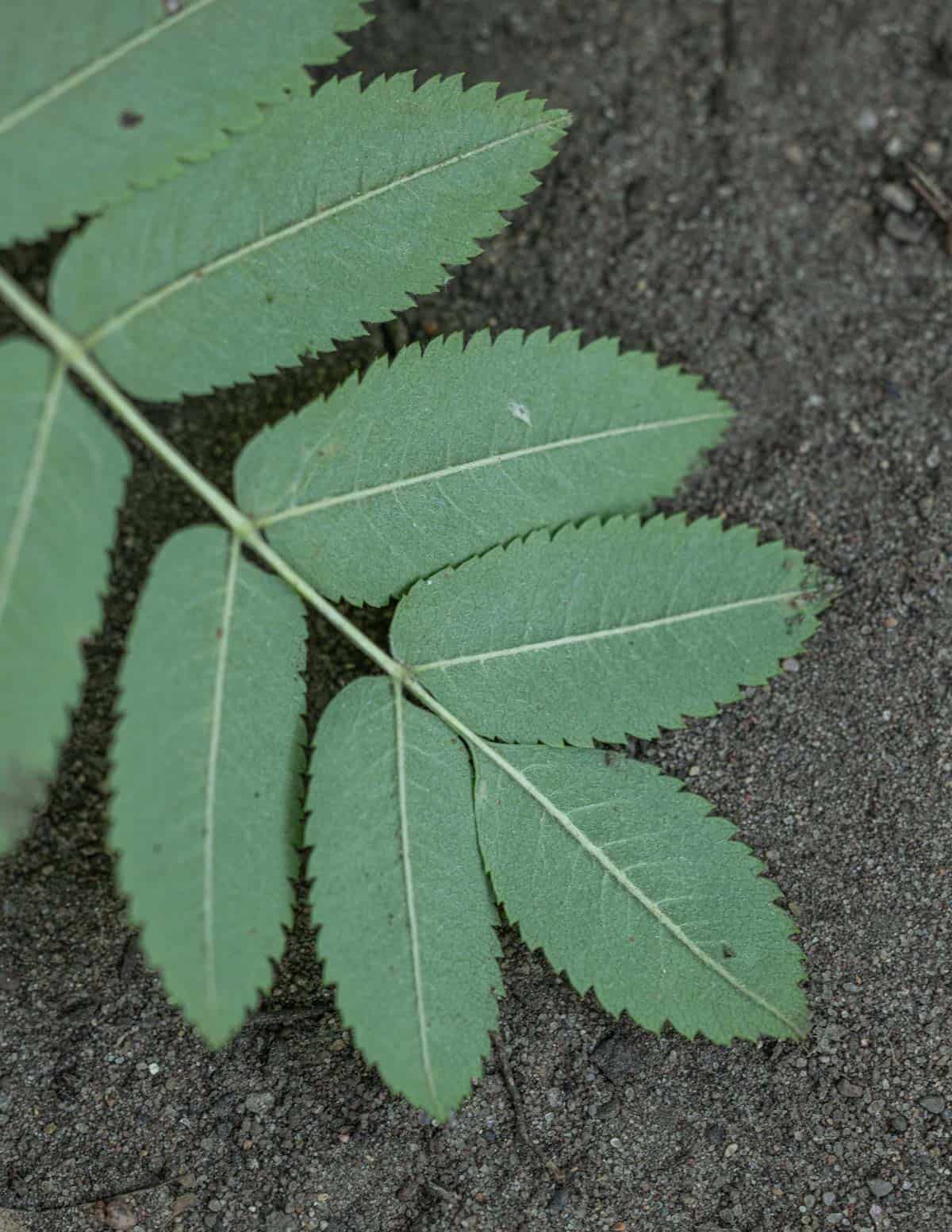
If you dig around a little online, you'll see glimpses of their history, especially in the old Celtic and Anglo Saxon traditions of Europe. See a fun page with archeological finds used to plan viking period themed menus including rowan berries here.
I'd never heard of the berries, or the mountain-ash trees they grow from until my foraging friend mentioned them and said that people made them into jams, jellies, and pickles.
The tree stuck out like a sore thumb: a medium sized tree, about 40 ft or so, filled with so many berries that the branches were bowing under their weight. If the Garden of Eden were a place, it would have plants that produce fruit like the mountain ash tree.
Can you Eat Rowan Berries?
Yes, they're a traditional food. The berries are edible raw in small amounts or cooked, but most will find them unpalatable raw. It's also important to note that in their raw state, the fruit contain cyanogenic glycosides, which is common in other related plants in the Prunus / Rose family (Rosaceae).
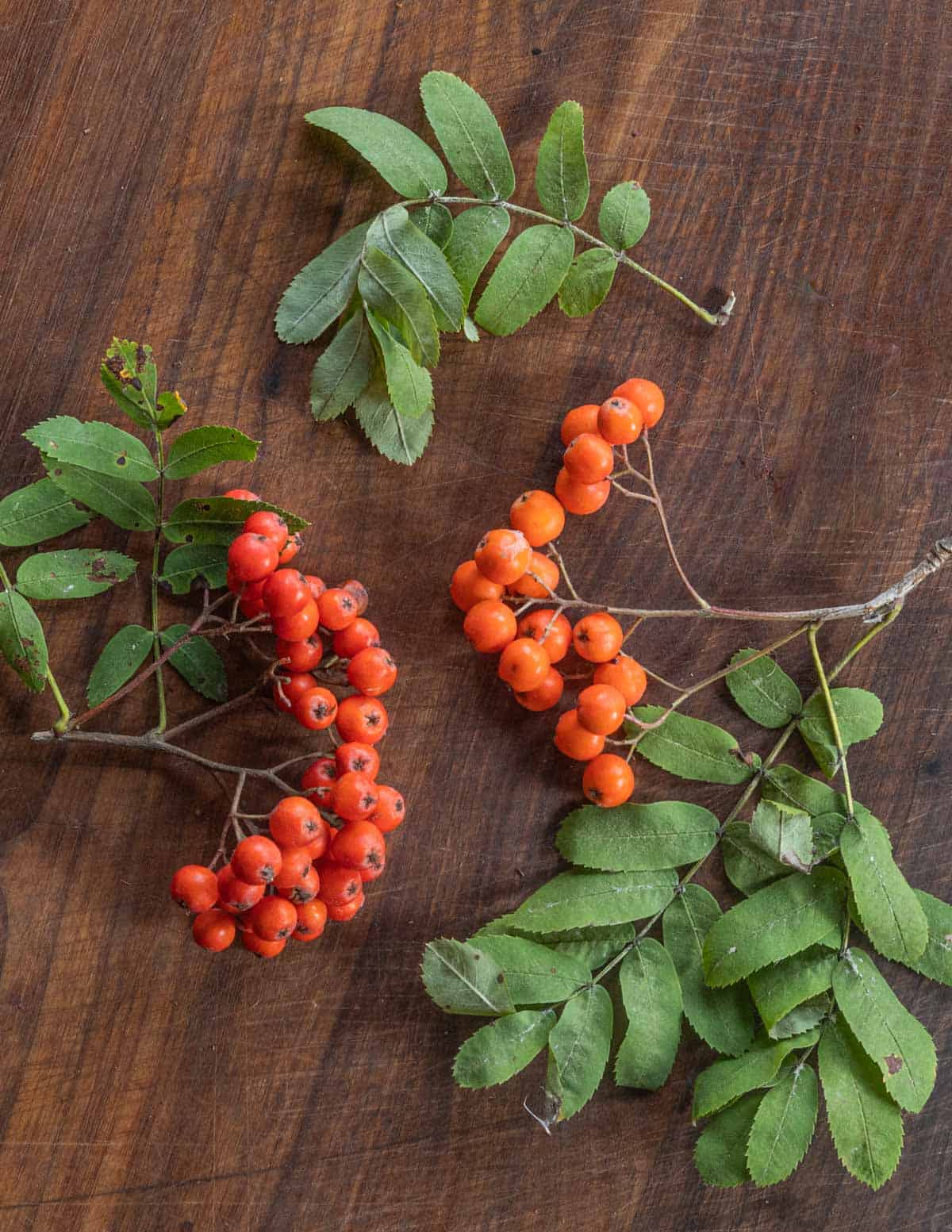
These glycosides can have an almond flavor and is the reason almond extract is made from the same compound in bitter almonds. Cooking makes the fruit safe and denatures the glycosides. See more in my post Cherry Pits: A Traditional Almond Seasoning.
Recently someone from Norway sent me a video of people eating rowan buds for their almond flavor. While true, this is a novelty as the glycosides need to be cooked to be safe.
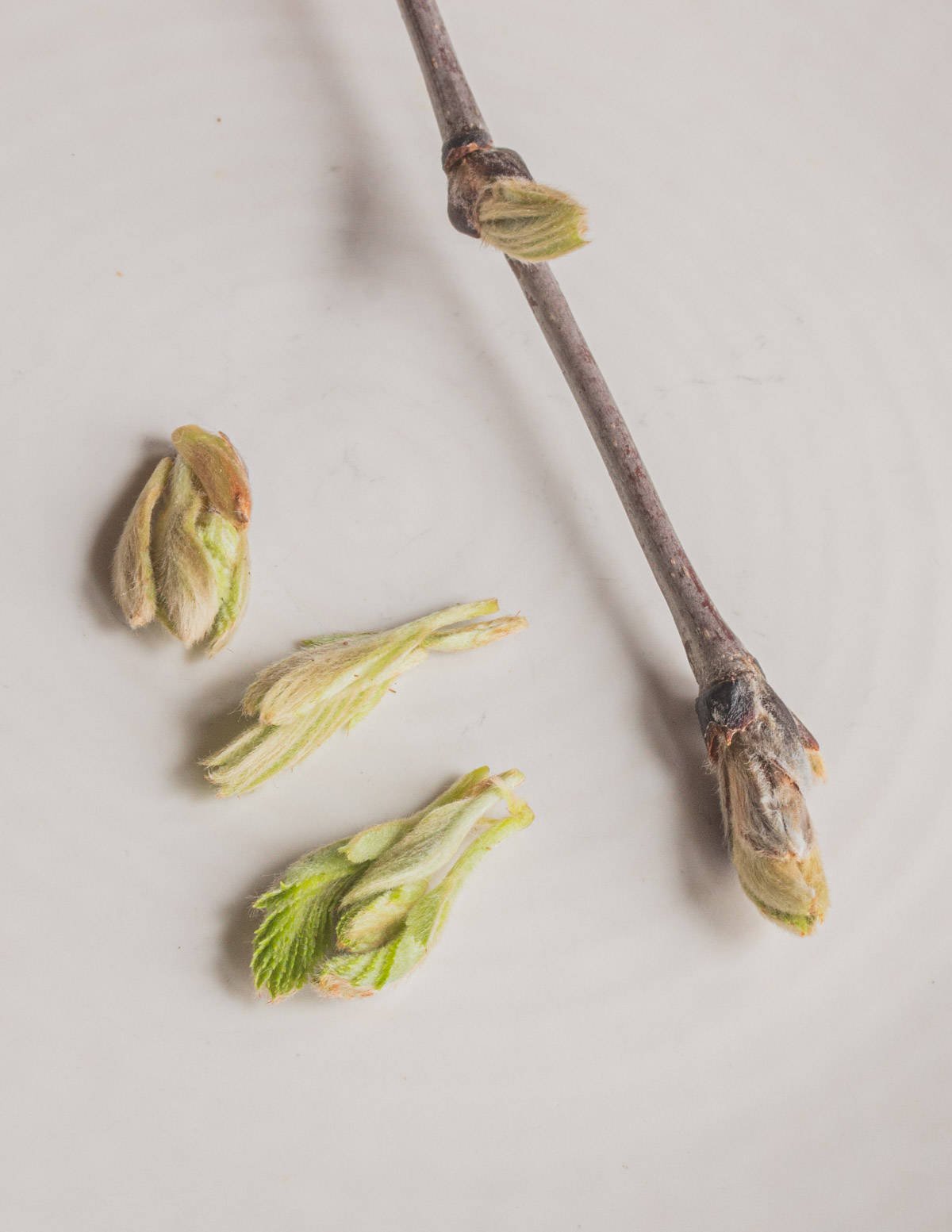
After your first taste, the word "fruit" might not seem as correct to describe them as you'd think, since rowan berries eaten fresh are super astringent/bitter. I'll be honest, they didn't seem like something I would want to eat, at first. The challenge to create with them was a lot of fun though.
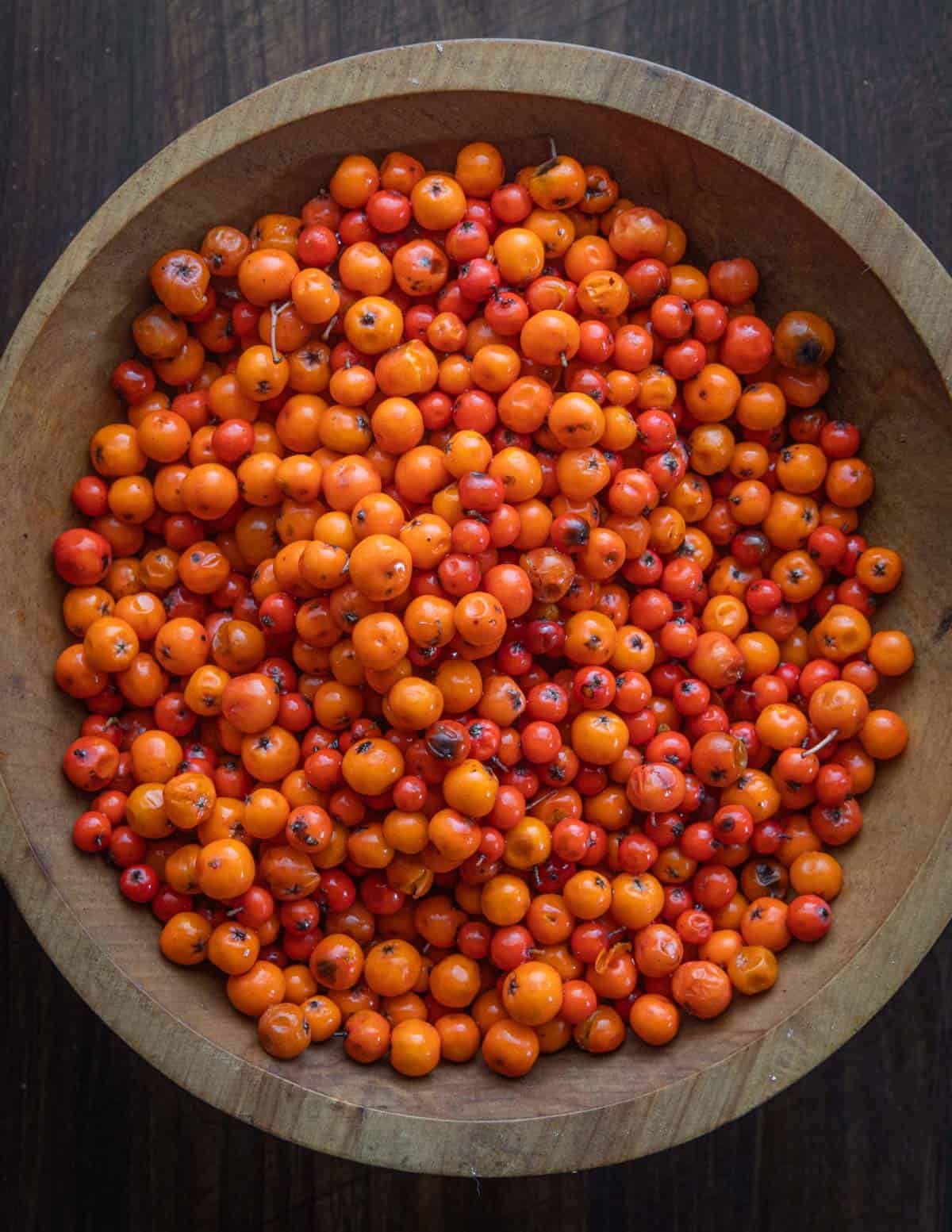
What got me even more excited was as I read through one of my favorite books, Faviken, I noticed the chef uses rowan berries in plenty of things.
Faviken was one of the most cutting edge restaurants in the world, and the terroir around their restaurant (located in Sweden) is similar to Minnesota, where I live in that it is a cold weather climate.
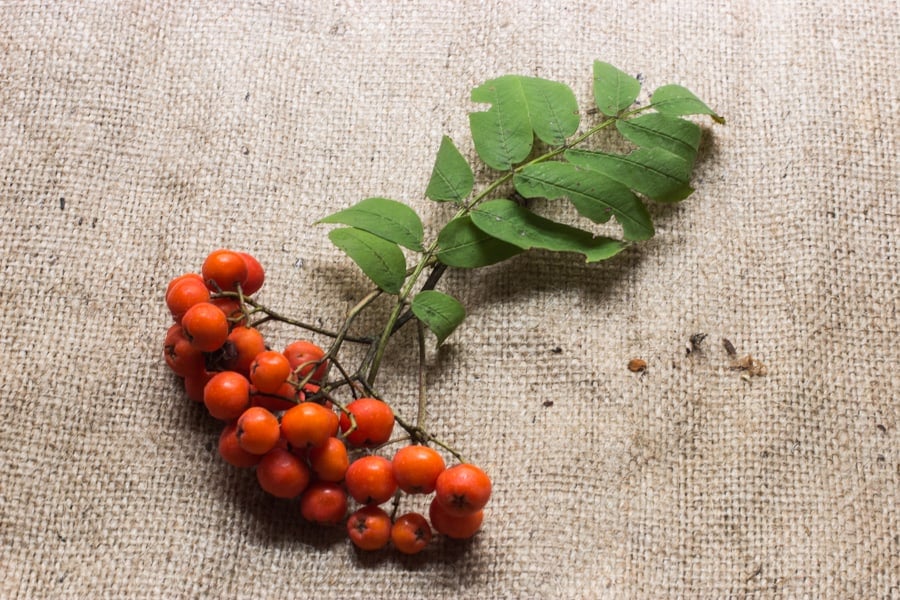
What Can You Do with Rowan berries?
Remove the berries from the stem and rinse them clean. After that they can be refrigerated for 2 months, or frozen without a loss in quality.
I tried a number of different preparations: Jelly, liquors, pickled, dried, frozen to concentrate their sweetness and then cooked (unsuccessful), cooked from raw, preserved in syrup, made into jam, and a funky technique of fermenting them in a water filled mason jar in the fridge like the Scandinavians do with lingon berries.
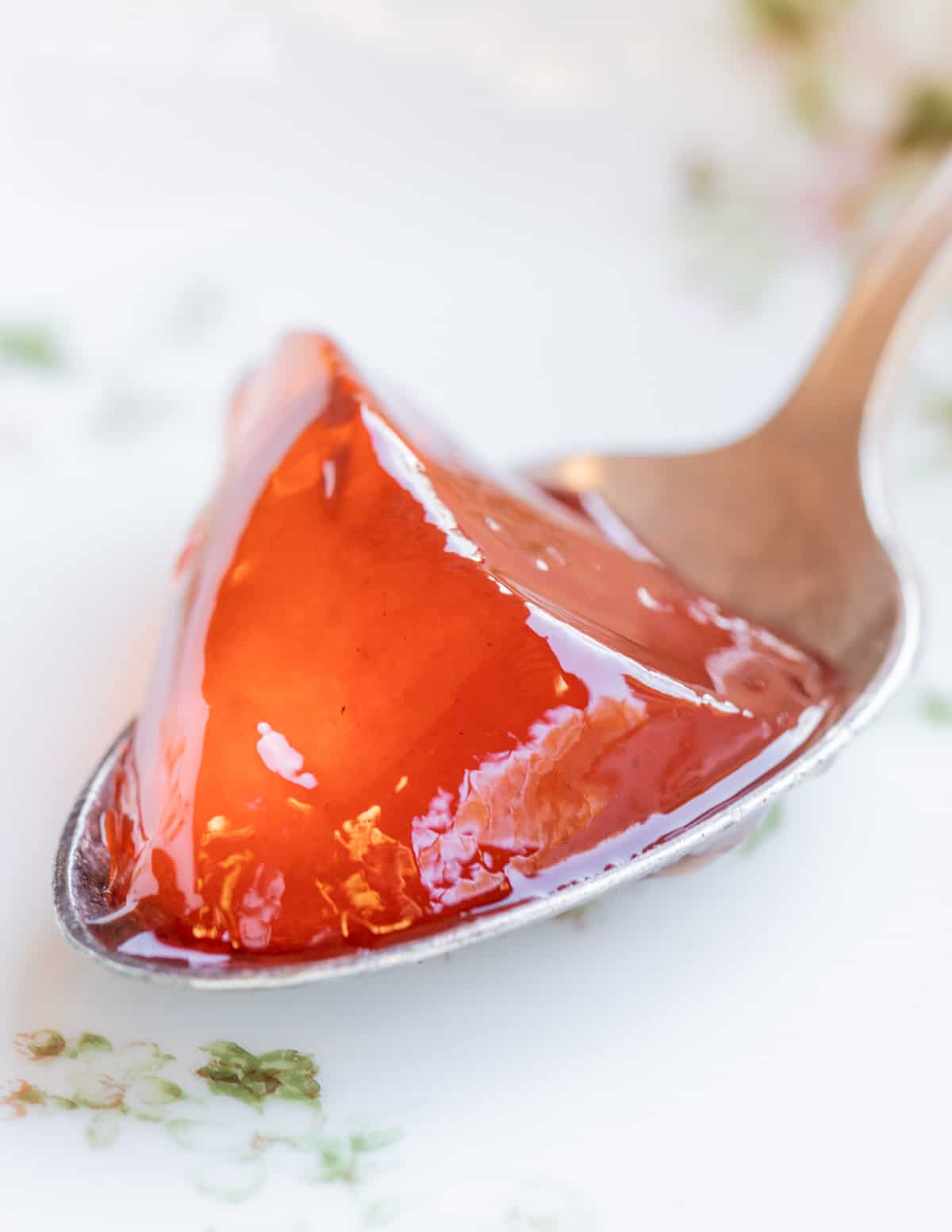
I also made sure to save berries picked before and after the frost to taste side by side, since plenty of people say they should be picked after the frost, since it makes them sweeter.
Here's my thoughts the berries are always going to be a bit bitter, but it isn't insurmountable. At first, I didn't think there would be any merit to the old wives tale about eating these after a frost, but there is.

Pick Rowanberries After a Frost
So, you went out and tasted a rowanberry, then thought about typing a message to me that I'm full of it, or maybe you've tasted them before and are wondering what the heck kind of palate this chef has. It's all about the cold weather with rowans, more so than any fruit I've tasted.
You can't just go out after the first frost though, because they'll still be horribly bitter. Like parsnips, you'll need repeated hard frosts to calm the flavor. But, I couldn't understand how I could even pick the berries after it got cold, since the cedar wax wings seemed to strip all of the rowan trees overnight.
The secret was that I was trying to hunt the berries in the wrong habitat. I was hunting the berries around the Twin Cities metro area, where our native mountain ash is relegated to small patches. My mistake was not understanding rowanberries are a creature of the cold north.
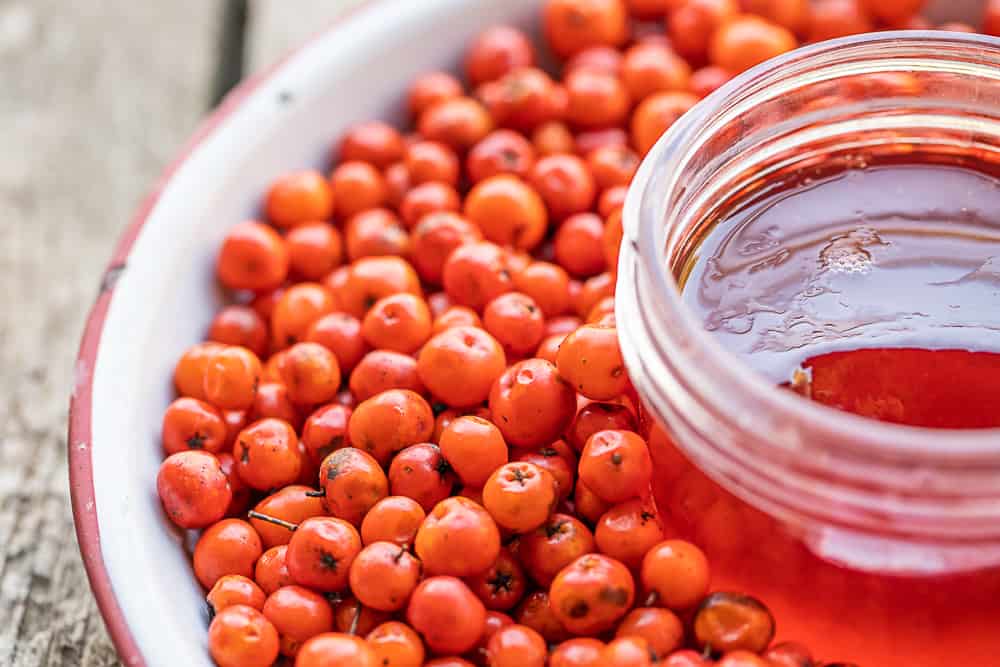
The berries will tolerate living in the central portion of the state, but their population thrives in the northern Minnesota forests dominated by pine, birch, and acidic, sandy soil. Even deep into October, the Rowanberries seemed to be everywhere on the trees on the Minnesota North Shore.
I had never seen so many in my life, and to my surprise, I could eat them straight off the tree without puckering as if I'd eaten something horrible. Tasting the berries after they'd been exposed for an extended period of time to the cold made them a completely different fruit.
Different Species, Different Flavors
There are different species of mountain ash, and they may taste slightly different. One tree I pick from has very small berries that I can eat straight from the tree and barely taste any bitter, some are incredibly bitter raw.

I'm a chef, not a botanist, so I can't speak to all the different types and hybrids, but don't be discouraged. From my experience, our native species (S. americana) produces bigger, better tasting berries more dependably than ornamental varieties. That said, all varieties I've had are interchangeable in the kitchen.
I've read about them being compared to cranberries, and if you have a little patience you might agree, but they take some finesse to get there.
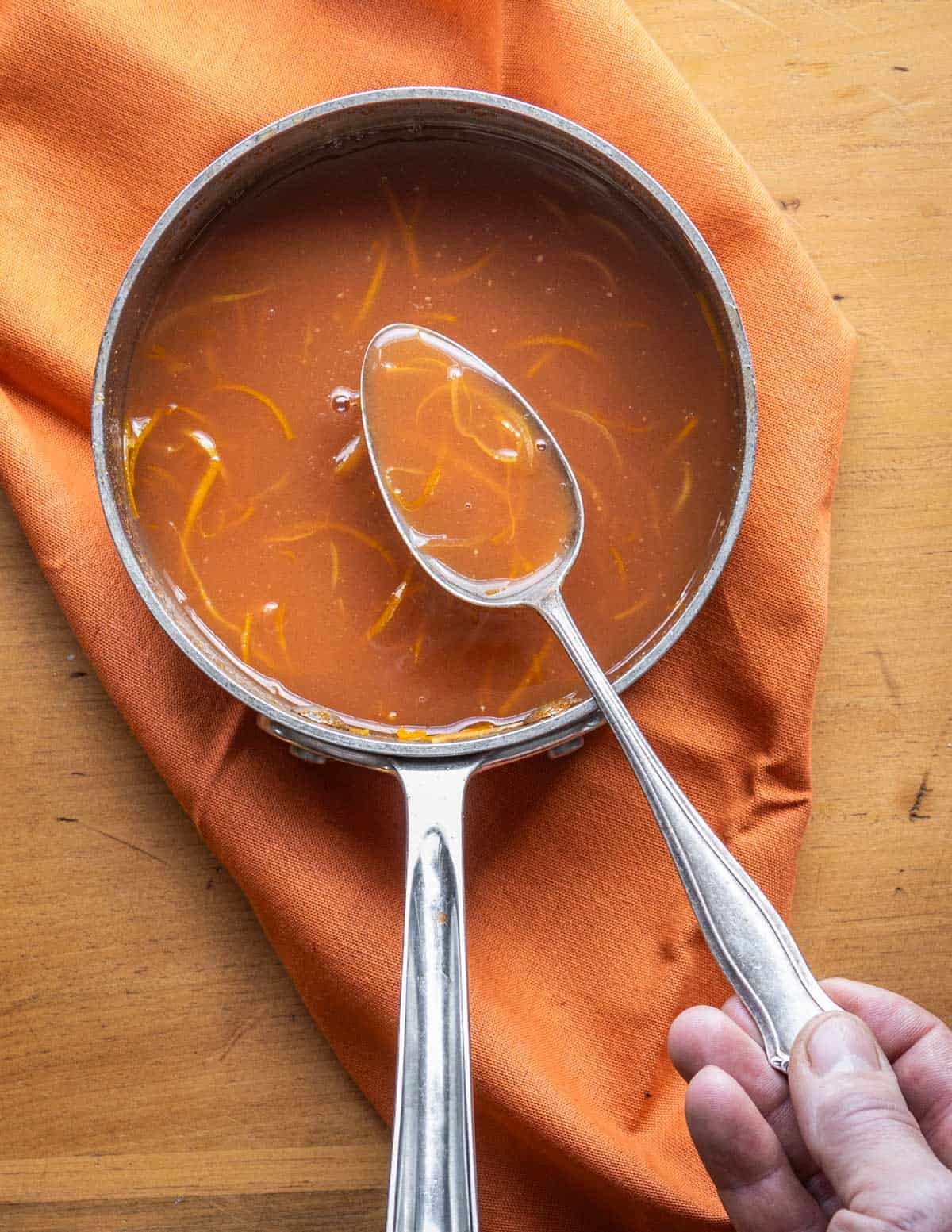
Pairing their flavor with things is easy though, just imagine cranberry, which means they go well with, but shouldn't be limited to partners like:
- Honey
- Sugar
- Herbs like thyme, tarragon, bay, chervil, spearmint, basil, peppermint
- Ginger
- Apples, pears, orange juice and zest,
- Warm spices like clove, nutmeg, cinnamon, and allspice, in moderation
How do they taste? Rowan berries, like I mentioned, are bitter at first, but also have a bright berry-ness to them comparable to orange and grapefruit peel, but it's hidden behind a strong flavor many people will find unpalatable. However you treat them, they'll retain a bit of the bitter edge.
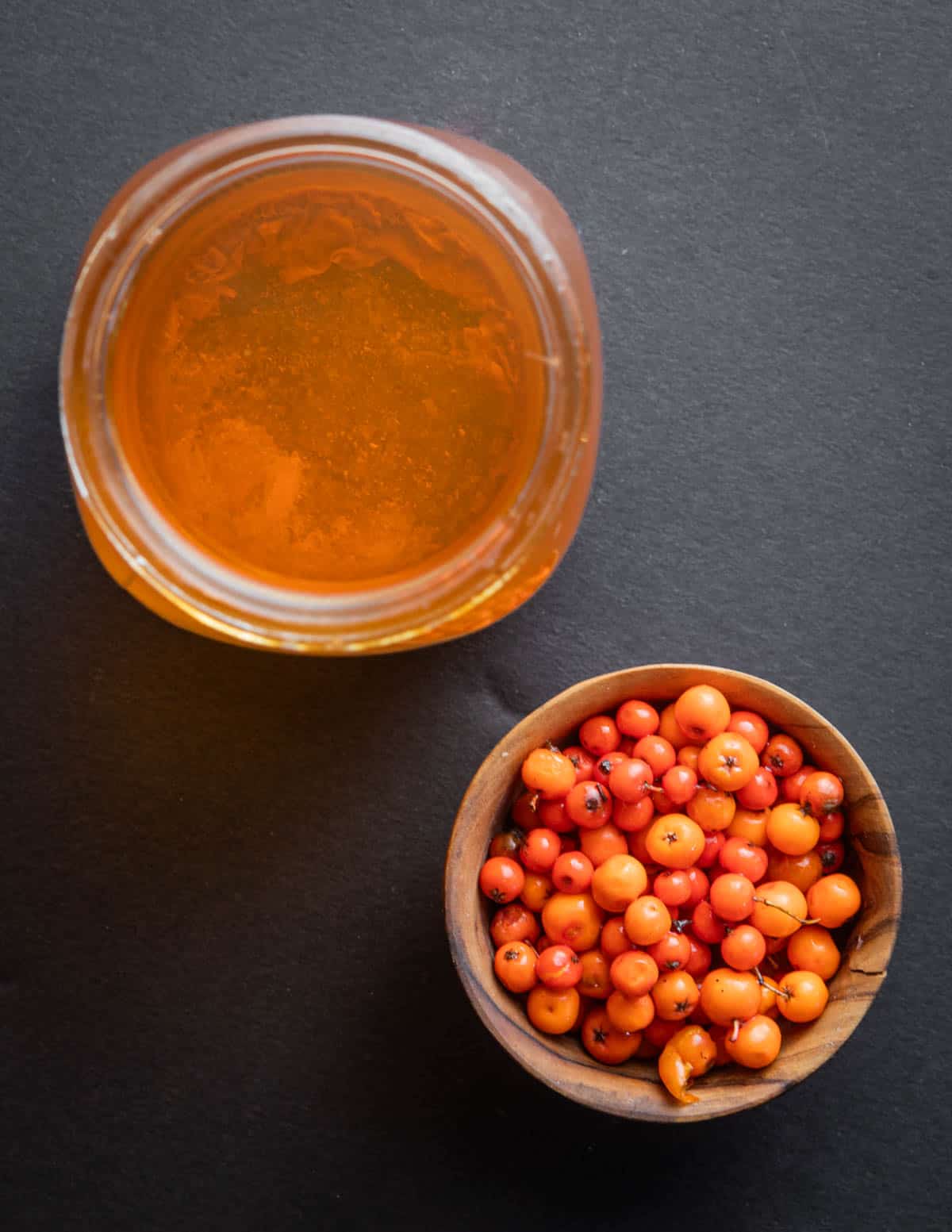
Before you spout off an email at me, know that the flavor mellow more after a couple months. Jelly is an exception, and is fine immediately after it sets.
Recipes
Here's a few basic ways to preserve them I like and links to other recipes I've created for them. The first thing you should do is make the classic jelly and Schnapps. The berries freeze well and cooked directly from the freezer, too.
- Classic Rowanberry Jelly
- Rowanberries in syrup
- Rowanberry Schnapps
- Rowanberry-Apple Jam
- Rowan Vinegar
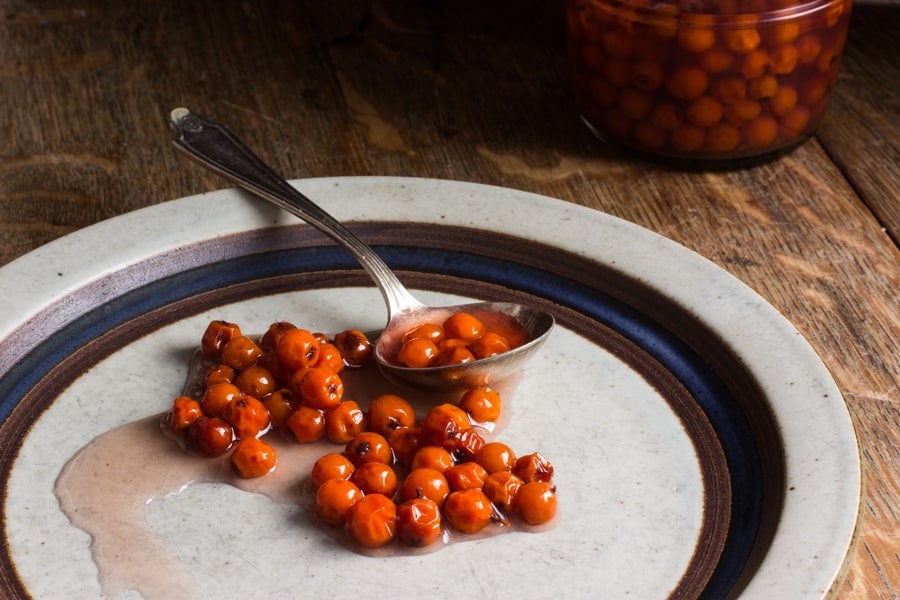
How to Harvest and Process Rowan Berries for Cooking
Equipment
- 1 Fruit hook I use an unraveled coat hanger to access tall branches.
Ingredients
- 4 lb Fresh rowan berries removed from their stems (This is enough fruit to make jelly and vinegar)
Instructions
- Harvest the whole clusters of fruit in the fall, preferably after a frost.
- Look over the berries and remove any that look old, dark, or fizzy (fermented).
- Wash the rowan berries to remove any debris.
- Put the fruit in a container and refrigerate. They'll last for two months fresh. Use them to make rowan jelly, schnapps or vinegar first.
Freezing
- For long term storage the fruit should be frozen. Freeze the berries on a baking sheet lined with parchment, then transfer to a zip top bag or other container and freeze.
Drying
- Some people like to use the berries in tea. If you'd like to try that, here's a simple method for drying the berries
- To dry the berries, then place in a dehydrator and dry at 135-150 degrees for 24 hours. Place the berries in an airtight container, preferably with little excess air (like a plastic freezer bag) and refrigerate. Use dried berries to make brewed tea mixed with orange peel and warm spices.

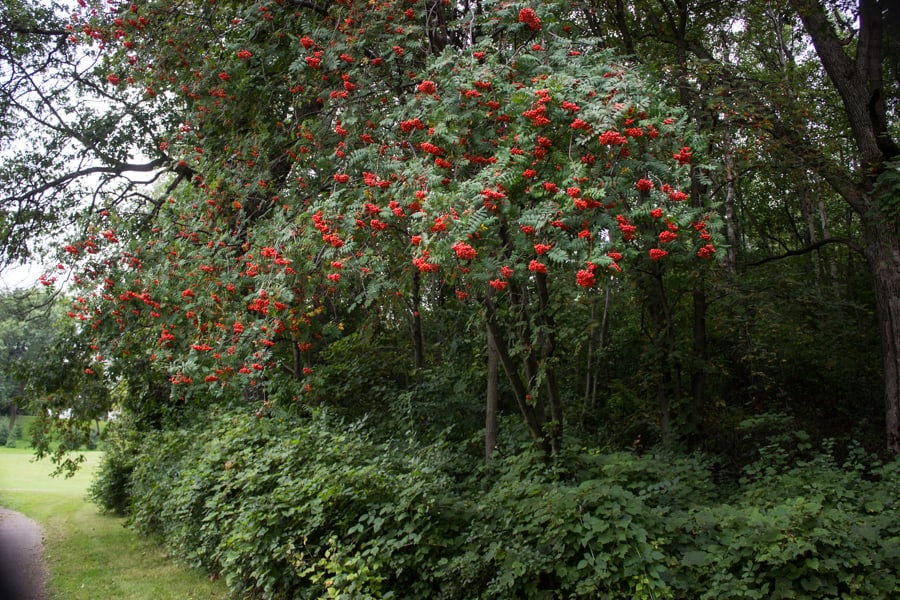

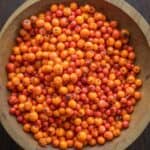
Gordon Brox
Do you have a recipe for how to ferment them after several frost nights?
Alan Bergo
You could vacuum bag them with 1% of their weight in salt.
Tanya
I usually freeze them, they are less tingly then. Very nice in sauces. I also tried jam once from Rowan berries. It was sweet and sour and a bit (but pleasantly) bitter. If you would experiment and find a good recipe for sauce and jam, I would be on a look out for it!
Alan Bergo
For a sauce you would use rowanberry jelly. In Scandinavian countries it might be served alongside, with a reduction of meat juices in a separate sauce container. For a French style sauce I'd use demi-glace and a splash of vinegar, adding the jelly and whisking in some cold unsalted butter to taste until thickened and emulsified.
Melanie Drecksel
So happy to read this! The birds, gifted us with 2 Rowen trees. One is a Flying Rowen that I read is very auspicious. The other is a little guy that the deer have munched on repeatedly and is now tall enough that they can't reach his upper branches. He needs to be moved to another spot, so I was doing a search to see if I should save him. Saved it is! The Flying Rowen is growing out of an old cedar stump and it will take an orchard ladder to reach the fruit. I am looking forward to giving your recipes a try! Thank you as always for your posts. BTW, love your book!
Alan Bergo
Thanks Melanie.
Sarah
Have you tried the mugolio treatment with these? Packing in equal weight of brown sugar, and waiting? Or do you think it would work? Or, alternately, if they don’t have enough liquid, macerating and fermenting in honey?
Alan Bergo
Hey Sarah fermenting them in honey is a really good idea. I'm going to have to try that this year. It should work like a charm. Mugolio would probably work. I might try to use a clear-ish sugar to try and capture some of the color.
Emily Nebergall
I’m a nut for bitter things, but even my non bitter-loving friends’ eyes went wide when they tried the Rowan jelly I made following your recipe. This stuff is wild, and I’m looking for more ways to use the berries now, because I have two heavily fruit laden trees in my yard and the little diminutive ones in the mountains are covered with slightly smaller, redder berries that taste just a bit different, stronger but not more bitter, than these here at sea level. What an amazing under-rated food.
Alan Bergo
Yeah the flavor is so good! And the hints of grapefruit rind flavor always get me.
Emily Nebergall
I’ve got a recipe for cranberry relish that is a thanksgiving staple in my family. It calls for whole oranges, sugar, and Cointreau to be pulsed in a food processor with raw cranberries. I’m going to experiment with substituting Rowan berries in syrup for the cranberries and leaving out most of the sugar. I have a feeling it will work out very, very well.
Brian McQuistion
We are in Austria, and here near Salzburg they make delicious schnapps from Rowan berries (as well as from every other fruit and even pine!
Anna
Would freezing them at home after picking them maybe help with the bitterness?
Alan Bergo
Not from my experience. You need multiple hard frosts and trying to replicate that at home seems tedious.
Jon
The secret with the frost, is that it initiates a speedier breakdown that transforms the sharp bitter nonsense inito the sweetest most divine flavour imaginable.
They dont rot. They go brown and soft and turn into fragranced heaven.
If your lazy when you pick them, youll get plenty of leaves and twigs. Perfecf tannin balance for wine.
Victoria
Isn’t it the seeds that are toxic?